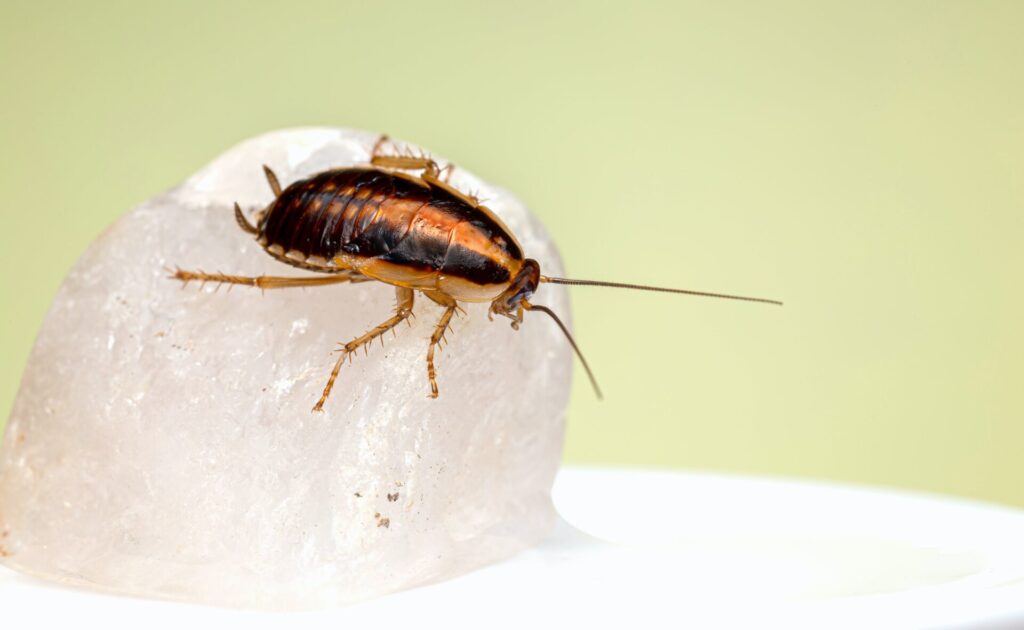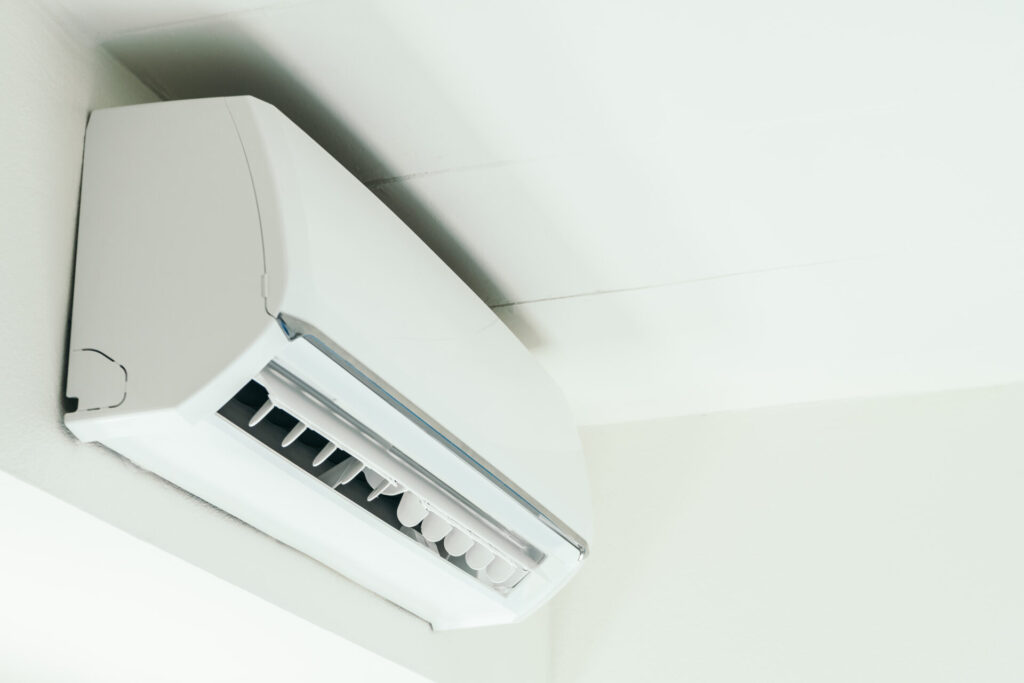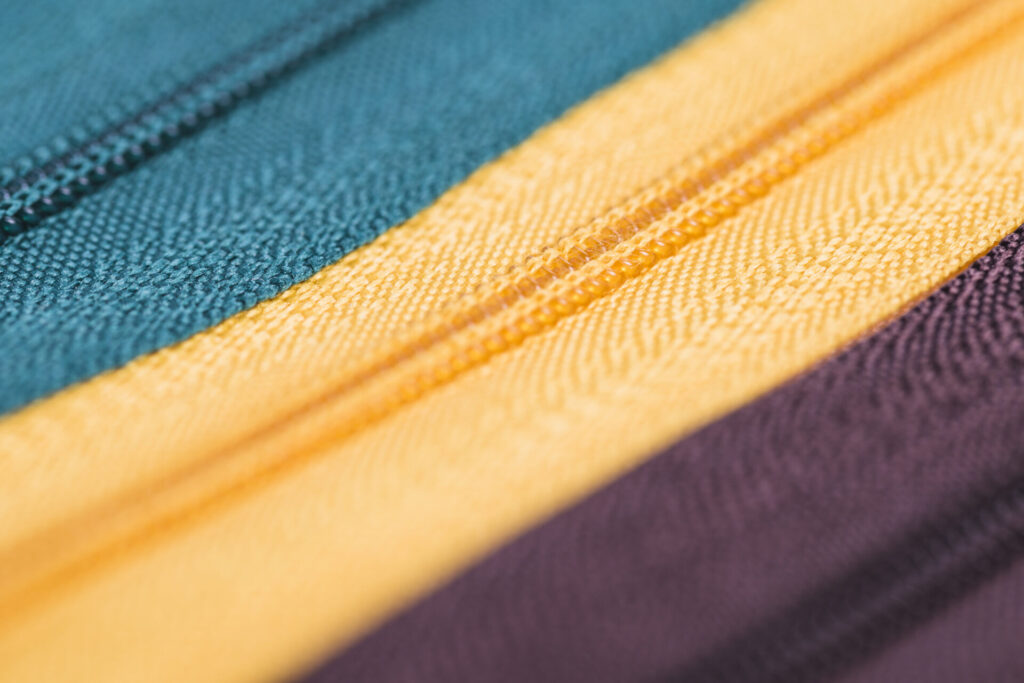Unmasking the Indoor Allergy Triggers
Contents
- 1 Unmasking the Indoor Allergy Triggers
- 1.1 Introduction:
- 1.2
- 1.3 1. Dust Mites: Microscopic Mischief Makers and How to Eradicate Them
- 1.4 2. Mold Spores: The Silent Invader and How to Stop Them in Their Tracks
- 1.5 read more posts
- 1.6 3. Pet Dander: Furry Friends, Sneezy Foes – Keeping the Love Without the Sneezes
- 1.7 4. Pollen: Don’t Let Spring Fling You Inside!
- 1.8 5. Cockroach Droppings: Unwanted Houseguests and Allergic Reactions
- 1.9 read more posts
- 1.10
- 1.11 6. Volatile Organic Compounds (VOCs): Hiding in Plain Sight
- 1.12 7. Tobacco Smoke: A Hazard Within
- 1.13 8.Household Cleaning Products: The Clean Paradox
- 1.14 9. HVAC Systems: Breeding Grounds for Allergens
- 1.15 10. Synthetic Fabrics and Bedding: The Unseen Agitators
- 1.16 Conclusion: Breathe Easy and Live Well in Your Allergy-Free Haven
- 1.17 Frequently Asked Questions (FAQs):
- 1.18
Read DISCLAIMER
Explore a comprehensive guide to unmasking the top 10 indoor allergy triggers, from dust mites to synthetic fabrics. Discover prevention strategies for a healthier, allergy-free home environment.
Introduction:
Do you ever feel like your home, your supposed sanctuary, is constantly triggering allergy attacks? You’re not alone. Millions of people struggle with indoor allergies, caused by unseen enemies lurking in carpets, furniture, and even the air we breathe. This comprehensive guide empowers you to take control of your environment and create a healthier haven.
We’ll unveil the top 10 indoor allergy triggers and equip you with practical prevention strategies for each one. From dust mites burrowing deep in your bedding to sneaky pollen sneaking through windows, we’ll show you how to reclaim your living space and breathe easy again.
1. Dust Mites: Microscopic Mischief Makers and How to Eradicate Them

Dust mites may be tiny, but they can wreak havoc on your sleep and well-being, triggering allergy symptoms like sneezing, itchy eyes, and runny nose. These microscopic creatures thrive in warm, humid environments, and your bed is their prime real estate. But fear not! By implementing a few key strategies, you can effectively eliminate dust mites and create a peaceful, allergy-free sleep sanctuary.
- Shield Your Sleep Sanctuary: Invest in allergen-proof encasements for your mattress and pillows. These specially woven covers act as a physical barrier, preventing dust mites from burrowing into your bedding and feeding on dead skin cells. Look for encasements with a zipper closure to ensure a complete seal.
- Wash Away Allergens: Regularly laundering your bedding in hot water (at least 130°F/54°C) is essential for killing dust mites and their allergy-causing proteins. Aim to wash sheets, pillowcases, and duvet covers once a week in hot water. If your bedding can’t handle such high temperatures, opt for drying it on high heat for at least 15 minutes to achieve the same effect.
- Vacuum Smarter: Dust mites love to hide deep within carpets, upholstery, and other soft surfaces. To effectively remove them, use a HEPA-filtered vacuum cleaner at least twice a week. HEPA filters trap even the smallest particles, including dust mites, their droppings, and other allergens. Remember to pay close attention to areas around your bed, furniture, and baseboards where dust mites tend to congregate.
2. Mold Spores: The Silent Invader and How to Stop Them in Their Tracks

Mold lurks unseen in our homes, but its presence can be felt through allergy symptoms, respiratory problems, and even a musty odor. Mold spores, the reproductive units of mold, float through the air and readily establish themselves in damp, warm environments. Bathrooms, kitchens, and laundry rooms are prime targets for these silent invaders.
The good news is that you can prevent mold growth and keep your home a healthy haven. Here’s a three-pronged approach to tackle mold spores:
- Embrace Fresh Air: Proper ventilation is key to controlling moisture levels and preventing mold growth. Open windows whenever possible, especially after showering, cooking, or doing laundry. Run exhaust fans in bathrooms and kitchens to remove excess moisture and prevent it from condensing on walls and ceilings.
- Dehumidify for Comfort: Mold thrives in humid environments. Ideally, you want to maintain indoor humidity levels between 30% and 50%. Invest in a hygrometer to measure humidity levels in your home. If humidity consistently exceeds 50%, consider using a dehumidifier to remove excess moisture from the air. This will create a less hospitable environment for mold spores and help prevent their growth.
- Act Swiftly: Mold problems can quickly escalate if left unchecked. Address any leaks or water damage promptly to prevent mold from taking root. Even small leaks can provide enough moisture for mold spores to germinate. If you discover mold growth, don’t ignore it! For small mold patches (less than 3 square feet), you can attempt to clean them yourself using a solution of one part bleach to ten parts water. However, for larger infestations or if you have concerns about your health, consult a professional mold remediation specialist.
By taking these steps to control moisture and address leaks promptly, you can prevent mold spores from taking hold and keep your home a healthy and comfortable environment.
read more posts
3. Pet Dander: Furry Friends, Sneezy Foes – Keeping the Love Without the Sneezes

We love our furry companions, but their dander, tiny flakes of dead skin cells, can wreak havoc on allergies. Don’t despair! Here are some strategies to minimize pet dander and create a harmonious home for everyone:
- Regular Grooming Routine: Brushing your pet regularly is your first line of defense. Daily brushing for long-haired breeds and frequent brushing for short-haired pets removes loose fur and dander before it has a chance to shed and disperse throughout your home. Consider using a deshedding brush specifically designed to remove loose undercoat and minimize shedding.
- Designate Pet-Free Zones: Create pet-free havens in your home, particularly bedrooms, to provide allergy sufferers with a dander-free sanctuary. Invest in washable throw blankets and pillows for furniture your pet uses, and replace them regularly to minimize dander build-up. Train your pet to stay off furniture in these designated areas.
- Purify the Air You Breathe: HEPA air purifiers are your secret weapon in the fight against pet dander. These air filtration systems effectively trap microscopic particles, including pet dander, dust mites, and pollen, from circulating in your indoor air. Consider placing HEPA air purifiers in high-traffic areas and pet-occupied rooms to create cleaner, healthier air for everyone.
By implementing these simple yet effective strategies, you can significantly reduce pet dander in your home, allowing you to enjoy the company of your furry friend without the constant sniffles. Remember, a little effort goes a long way in creating a happy and healthy environment for both you and your pet!
4. Pollen: Don’t Let Spring Fling You Inside!

Spring may bring beautiful blooms, but for allergy sufferers, pollen can turn the season into a nightmare of itchy eyes, runny noses, and constant achooing. This tiny culprit, released by plants for reproduction, can easily hitch a ride on the wind and infiltrate your home, making you miserable indoors too. But fear not, pollen warriors! Here are some effective strategies to keep pollen at bay and create a peaceful haven inside:
- Seal Out Seasonal Allergies: During peak pollen seasons (usually spring and fall), enjoy the beauty of nature from afar. Keep windows and doors closed as much as possible, especially in the early mornings and evenings when pollen counts are typically highest. Consider investing in weather stripping around windows and doors to create a tighter seal and prevent pollen from sneaking in.
- HEPA Air Purification: HEPA air purifiers are your pollen-fighting superheroes. These air filtration systems trap microscopic particles, including pollen, dust mites, and pet dander, ensuring cleaner, healthier air for you to breathe. Place HEPA air purifiers in your living room, bedroom, or other frequently used rooms to create a pollen-free sanctuary within your home.
- Maintain a Clean Environment: Pollen can accumulate on furniture, surfaces, and floors. Regular dusting with a damp cloth or microfiber mop traps pollen before it has a chance to circulate in the air and trigger allergy symptoms. Don’t forget to clean blinds, curtains, and air vents, which can become pollen magnets over time. By maintaining a clean environment, you can significantly reduce indoor pollen levels and breathe easier.
Remember, a little planning and proactive measures can go a long way in keeping pollen at bay and allowing you to enjoy the beauty of spring without the misery of allergies.
We’ve tackled dust mites, mold spores, pet dander, and pollen. Now, let’s explore strategies to combat other common indoor allergy triggers:
5. Cockroach Droppings: Unwanted Houseguests and Allergic Reactions

These unwelcome visitors not only disgust but can also trigger allergies. Here’s how to keep them out:
- Seal Entry Points: Cockroaches are tiny and can squeeze through the smallest cracks. Seal cracks and crevices around pipes, baseboards, and entry points like doors and windows to prevent them from entering your home.
- Practice Cleanliness: Cockroaches are attracted to crumbs, spills, and garbage. Maintain a clean kitchen and dining area, and store food in airtight containers. Regularly empty trash cans and dispose of garbage properly.
- Natural Deterrents: Use natural deterrents like boric acid or diatomaceous earth to discourage cockroach activity. These powders dehydrate cockroaches upon contact and can be sprinkled around potential entry points.
read more posts
6. Volatile Organic Compounds (VOCs): Hiding in Plain Sight

VOCs are chemicals emitted by various household products that can irritate allergies. Here’s how to minimize exposure:
- Choose Low-VOC Products: Look for low-VOC or VOC-free paints, carpets, furniture, and cleaning products. Many manufacturers now offer eco-friendly options that minimize indoor air pollution.
- Enhance Ventilation: Open windows and doors whenever possible to allow fresh air to circulate and remove VOCs from your home. Run exhaust fans in kitchens and bathrooms during use to vent pollutants outdoors.
- Harness Nature’s Air Purifiers: Houseplants act as natural air filters, absorbing VOCs and improving indoor air quality. Consider adding spider plants, philodendrons, or snake plants to your home.
7. Tobacco Smoke: A Hazard Within

Secondhand smoke is a serious health hazard for everyone, especially allergy sufferers. Here’s how to create a smoke-free environment:
- Enforce No-Smoking Policies: Implement a strict no-smoking policy inside your home. This protects everyone from exposure to secondhand smoke and its associated health risks.
- Provide Outdoor Smoking Areas: If someone smokes, designate a specific outdoor area for them to do so. This minimizes smoke infiltration into your living space.
- Invest in Air Purifiers: HEPA air purifiers can effectively remove smoke particles from indoor air. Consider using air purifiers in rooms where smoking might occur occasionally, like a designated smoking porch.
8.Household Cleaning Products: The Clean Paradox

While cleaning products keep your home sanitized, some can trigger allergies. Here’s how to clean safely:
- Choose Natural Alternatives: Opt for natural cleaning solutions like vinegar, baking soda, and lemon juice whenever possible. These natural ingredients are effective cleaners and less likely to trigger allergies.
- Ensure Proper Ventilation: Open windows and doors while cleaning to minimize exposure to cleaning fumes. Consider wearing gloves and a mask if using harsh chemicals.
- Practice Safe Storage: Store cleaning products securely in a locked cabinet or out of reach of children and pets. Never mix cleaning products, as this can create harmful fumes.
9. HVAC Systems: Breeding Grounds for Allergens

Your HVAC system can harbor allergens and recirculate them throughout your home. Here’s how to maintain a clean and healthy airflow:
- Replace Air Filters Regularly: Change your air filters according to the manufacturer’s recommendations, typically every 1-3 months. This traps allergens before they circulate through your home.
- Schedule Professional Maintenance: Schedule regular professional maintenance for your HVAC system. This ensures your system operates efficiently and removes any built-up dust or allergens within the ducts.
- Consider Air Purification: HEPA air purifiers can be integrated into your HVAC system to provide an extra layer of filtration and remove allergens from circulating air throughout your home.
10. Synthetic Fabrics and Bedding: The Unseen Agitators

Synthetic materials can trap dust mites and other allergens, worsening allergies. Here’s how to choose allergy-friendly options:
- Choose Hypoallergenic Options: Invest in hypoallergenic bedding made from natural fibers like cotton. These materials are less likely to trap allergens and provide a more breathable sleep experience.
- Wash Regularly: Wash bedding in hot water (at least 130°F/54°C) weekly to remove dust mites, dead skin cells, and other allergens that can accumulate on fabrics.
- Opt for Natural Fibers: Choose natural fiber options for furniture, rugs, and curtains whenever possible. Synthetic materials tend to trap allergens more easily than natural fibers.
Conclusion: Breathe Easy and Live Well in Your Allergy-Free Haven
Do you ever dream of a home where you can relax without the constant sniffles and itchy eyes? The good news is, this dream can become a reality! By implementing the practical prevention strategies outlined in this guide, you can transform your living space from an allergy battleground into a haven of comfort and health.
Imagine waking up in a bedroom free from dust mites, breathing clean air purified of pollen and pet dander. Picture a kitchen and living area where harsh chemicals are replaced by natural cleaning solutions, and the air is fresh and free of irritants. This is the power of proactive allergy prevention!
Taking charge of your indoor environment doesn’t have to be overwhelming. The simple steps outlined in this guide, from regularly changing air filters to opting for natural cleaning solutions, can significantly reduce your exposure to allergens and create a healthier living space for everyone.
Frequently Asked Questions (FAQs):
1. Q: What are dust mites, and how do they affect indoor air quality?
– A: Dust mites are microscopic arachnids that thrive in warm, humid conditions. They feed on dead skin cells and can negatively impact indoor air quality, triggering allergies. Implementing measures like allergen-proof covers and regular washing in hot water can help reduce dust mite presence.
2. Q: How can I prevent mold spores from infiltrating my home?
– A: Adequate ventilation, timely leak repairs, consistent cleaning, and careful indoor plant care are essential in preventing mold growth. These measures help maintain low humidity levels and create an environment less conducive to mold spores.
3. Q: Can pet dander be effectively managed in a home with furry companions?
– A: Daily grooming, designated pet-free areas, HEPA air purifiers, regular maintenance, and clean pet toys and bedding are effective strategies in reducing pet dander. These steps allow for a harmonious living environment with pets while minimizing allergic responses.
4. Q: How can I minimize pollen exposure indoors, especially during high pollen seasons?
– A: Managing windows and doors, using HEPA air purifiers, daily dusting, practicing shoe removal, and personal hygiene principles help reduce pollen infiltration. These measures contribute to a pollen-free indoor environment, especially during seasons with high pollen counts.
5. Q: What preventive measures can be taken against cockroach droppings and their allergenic effects?
– A: Sealing cracks, airtight food storage, regular cleaning, appropriate garbage management, natural deterrents, and professional pest control are key in preventing cockroach infestations and minimizing the risk of allergic reactions.
6. Q: How can I reduce the impact of volatile organic compounds (VOCs) in my home?
– A: Opt for low-VOC or VOC-free products, ensure proper ventilation, use air-purifying houseplants, choose water-based paints, limit the use of air fresheners, and let recently bought items off-gas in well-ventilated areas.
7. Q: What are effective strategies for managing tobacco smoke indoors?
– A: Enforce a strict indoor smoking policy, designate outdoor smoking areas, use air purifiers with HEPA filters, ensure proper ventilation, clean and deodorize surfaces, and promote smoking cessation to minimize the negative effects of tobacco smoke.
8. Q: How can I choose cleaning products that maintain a clean home without aggravating allergies?
– A: Opt for natural and sustainable substitutes, choose hypoallergenic products, ensure correct ventilation, wear gloves during cleaning, consider DIY cleaning solutions, examine labels for harsh chemicals, and practice proper storage.
9. Q: What preventive measures should be taken to maintain HVAC systems as allies in indoor air quality?
– A: Regularly replace air filters, schedule professional HVAC maintenance, consider UV-C air purifiers, use HEPA filters, maintain appropriate ventilation, schedule routine duct and vent cleaning, and monitor humidity levels to ensure HVAC systems contribute to clean indoor air.
10. Q: How can synthetic fabrics and bedding contribute to indoor allergies, and what preventive steps can be taken?
– A: Synthetic bedding can harbor allergens like pollen, pet dander, and dust mites. Choose hypoallergenic options, wash linens regularly in hot water, use mattress and pillow covers, opt for natural fibers, avoid heavy draperies, and rotate and air out pillows and cushions to create an allergy-friendly sleeping environment.
Don’t settle for a life filled with allergy symptoms. Subscribe to our blog for even more tips and resources on creating a healthy home environment. Learn about the latest advancements in air purification, discover natural cleaning recipes, and explore allergy-friendly decorating ideas. With a little knowledge and effort, you can breathe freely and live well in your very own allergy-free haven.
So subscribe today, and breathe easy ever after!

Excellent read, I just passed this onto a colleague who was doing some research on that. And he actually bought me lunch since I found it for him smile Thus let me rephrase that: Thank you for lunch!
Hi there, You have done an excellent job. I抣l certainly digg it and personally recommend to my friends. I am sure they’ll be benefited from this web site.
Thanks for your posting on this blog. From my experience, periodically softening right up a photograph may provide the photo shooter with a little an creative flare. Often times however, this soft cloud isn’t what precisely you had in mind and can often times spoil an otherwise good snapshot, especially if you anticipate enlarging that.
WONDERFUL Post.thanks for share..extra wait .. ?
This is really interesting, You are a very skilled blogger. I’ve joined your feed and look forward to seeking more of your great post. Also, I’ve shared your website in my social networks!
Hello there, just became alert to your blog through Google, and found that it is really informative. I抦 gonna watch out for brussels. I will appreciate if you continue this in future. A lot of people will be benefited from your writing. Cheers!
Definitely, what a magnificent site and educative posts, I will bookmark your site.Best Regards!
I was very happy to find this net-site.I wished to thanks for your time for this wonderful learn!! I positively having fun with each little little bit of it and I’ve you bookmarked to check out new stuff you weblog post.
I was very pleased to seek out this internet-site.I needed to thanks on your time for this excellent learn!! I positively having fun with each little little bit of it and I’ve you bookmarked to check out new stuff you weblog post.
“Есть ли противопоказания для лазерного удаления папиллом?” – “Противопоказания включают беременность, наличие острых воспалительных заболеваний кожи, сахарный диабет и индивидуальную непереносимость лазерной терапии.”
“Are there any contraindications for laser removal of papillomas?” – “Contraindications include pregnancy, acute inflammatory skin diseases, diabetes, and individual intolerance to laser therapy.”
папилломы удаление лазером цена [url=https://www.udalenie.com.ru/]https://www.udalenie.com.ru/[/url] .